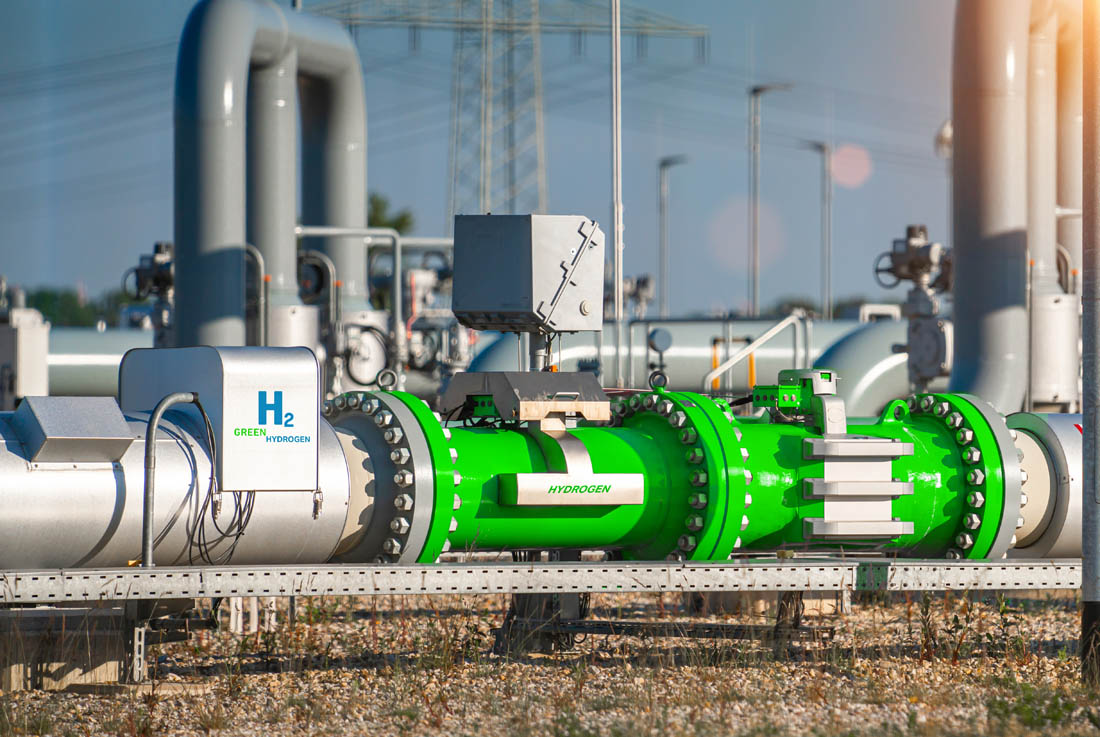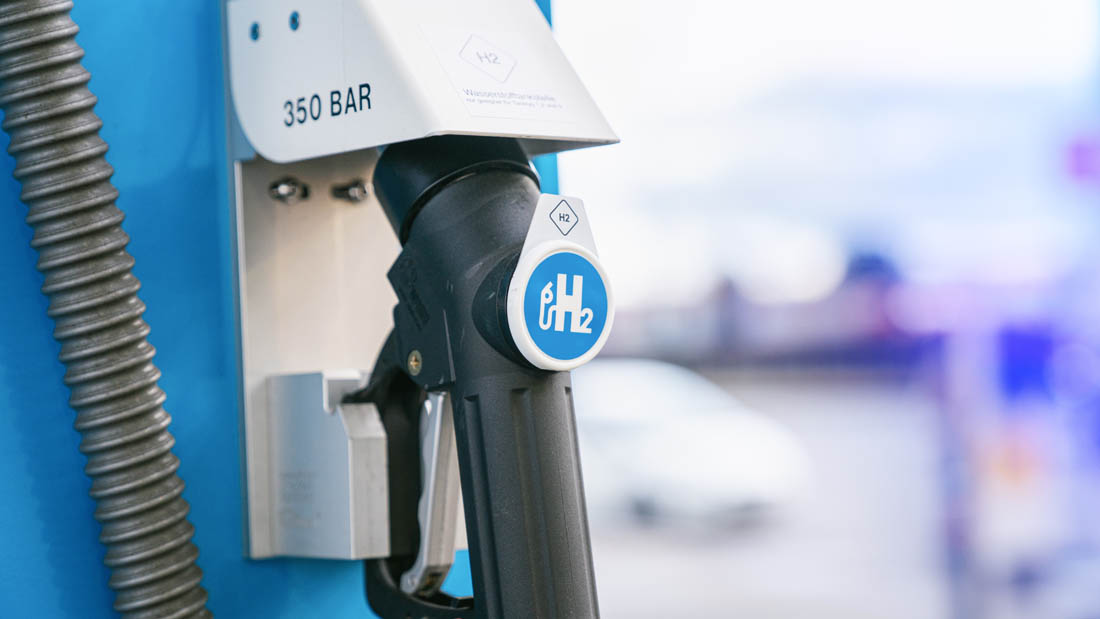TICKERS: FSH, BLX, BPT.UN, CTIUS, XIDE, HEO, HGS; HYDVF, OPTT, SYXXF, , WWPW
Vikas Ranjan: Look for Sustainable Models in Cleantech
Interview
Source: Brian Sylvester of The Energy Report (8/26/10)
 "Ubika" is an ancient Sanskrit word meaning growth. Ubika Research Cofounder and Managing Director Vikas Ranjan knows investors covet growth, so Ubika covers companies in sectors with tremendous growth potential. In this exclusive interview with The Energy Report, Vikas offers some strategies on how to play the cleantech sector and discusses in detail several companies ready to flourish.
"Ubika" is an ancient Sanskrit word meaning growth. Ubika Research Cofounder and Managing Director Vikas Ranjan knows investors covet growth, so Ubika covers companies in sectors with tremendous growth potential. In this exclusive interview with The Energy Report, Vikas offers some strategies on how to play the cleantech sector and discusses in detail several companies ready to flourish.
Vikas Ranjan: Cleantech is the development of the whole range of technology that will enable humankind to basically conduct life in ways that are more eco-friendly and sustainable. It's a fairly broad term. For example, alternative-energy generation companies (i.e., wind, solar and geothermal companies) all fall into the cleantech category.
TER: Are you noticing any trends in that market segment?
VR: Yes, absolutely. A couple of years ago when you talked about cleantech, the discussion mostly centered on alternative energy with a focus on wind, solar and, to a certain extent, geothermal companies. But in the last three years or so, there's been an acknowledgment that cleantech is much more than renewable power generation. This move toward a broader classification is a really big change.
Another big change would be the growth of a whole set of companies that focus on very basic problems, for example, methods of providing clean drinking water to the vast majority of the global population, and more efficient technologies for waste management, especially in developing countries.
We are seeing a growing acceptance of clean technologies in these areas, and you can see increased participation among the governments, especially in the developed world. Governments are actively supporting this sector through various programs and some subsidies.
TER: The sector includes quite a few companies now. Is there an index that measures the performance of the cleantech sector?
VR: That's a good question. Determining what is considered a cleantech company is difficult, and I believe that makes it harder to construct an index. However, the Toronto Stock Exchange (TSX) recently launched a cleantech index. The TSX claims there are about 125 clean technology–focused companies listed on the Toronto Stock Exchange and the TSX Venture Exchange, and it selected 21 of those companies for its index.
Another broader cleantech index is the Cleantech Index (NYSE.A:CTIUS), which was launched by the Cleantech Group and the AMEX. It has 77 companies. Deustche Bank and NASDAQ OMX also recently launched an index that consists of 119 companies from around the globe.
We believe many more indexes will be launched as this sector gains attention from a range of investors.
TER: There's risk associated with investing in all companies, but when it comes to cleantech, the risk is significantly higher because these companies often do not have proven business models. Why should investors risk it?
VR: This is an excellent question and a question every investor should ask. To start, I would suggest investors think of the cleantech sector from purely an investment standpoint, excluding the ethical side, which certainly has a positive bearing from an investment point of view. From purely an investment perspective, an investor should think of cleantech as an emerging area that will inevitably go through many changes.
If you want a decent return on your portfolio, one of the things that you should do is look for emerging growth industries. There is no question that cleantech is an emerging growth industry. If you believe that premise, then it makes sense to have some exposure to cleantech. The extent of exposure will depend on each individual investor's personal situation and investment preference.
TER: Looking historically at other sectors, can you compare where the cleantech sector is at?
VR: You will remember the dot.com industry, which saw rapid growth and attracted many early-stage companies in the 1990s, but also witnessed a rapid transformation that left only a few companies with sustainable business models as winners.
We believe that cleantech will go through a similar process, and over time you will see only a select few come out on top. If we have to pick winners, we will bet on those areas that are focused on solving problems that affect the masses, not only in wealthy countries, but also in emerging and developing countries.
A quick example is the battery industry, which is a cleantech sector that attracts lots of investment. There are lots of companies producing batteries for electric cars, which is supposedly a huge growth area for cleantech companies. If you look closely, however, I would say that the jury is still out about the size of the end market. Electric cars are priced pretty high. Even the GM Volt, which will be available in 2011, will have an MRSP of $41,000, high by pricing standards for a compact car. All of these vehicles are supported by heavy government subsidies and incentives. If that market doesn't take off, what do you think will happen to the cleantech companies focused on manufacturing these electric batteries? It won't be good.
That is something investors should keep in mind. What seems "hot" today may or may not be very much in focus a couple of years down the road; whereas, if you look at areas that are focused on solving issues like water contamination or excess waste, they have more sustainability. Even companies focused on Smart Grid technology, which allows new sources of renewable energy to be supplied to mainstream power systems that distribute electricity, are good prospects. Companies with effective and commercially viable technologies in these areas will have a sustainable and large market to cater to. Those are, in our opinion, areas that will probably do well and will be sustainable in the long term.
TER: What percentage of an investor's portfolio should be in cleantech?
VR: Considering all the novelty related to the sector and a lot of unknowns, I would not recommend that investors should put more than 10%–15% of their stock portfolio in cleantech companies. But that may change over time as the sector matures. The extent of exposure also depends on each investor's personal situation and investment preferences.
TER: You mentioned battery power and power storage. What are some companies that you cover that are making progress in that sector?
VR: There are various companies in that sector, but one in particular is Exide Technologies (NASDAQ:XIDE). This is a well-established company; it makes lead acid batteries and other energy storage solutions. It had $2.6 billion in revenue last year, but the market cap is below $400 million. It is considered a worldwide leader in lead acid battery technology, so it has the technology and solid engineering resources. The company had, I think, adjusted earnings before interest, taxes, depreciation, and amortization (EBITDA) of close to $200 million in its last fiscal year, ending March 2010, but the market cap is pretty low.
TER: Why is that?
VR: Actually, the company had a reduction in revenue margins and profits between 2009 and 2010. That probably resulted in investor disappointment, and that must have pressured the stock. We believe the company is undergoing an organizational restructuring, which will hopefully improve cash flow, head count and working capital. If you think that the reorganizing and restructuring efforts will pay off, then it could be a good value play at these levels.
TER: One of the more established sectors in cleantech is power generation. What companies are you following in that subsector?
VR: Yeah, that is probably the most well-known cleantech sector. And it kind of broadly encompasses various areas including wind, solar, ocean wave, geothermal and what not. One of the companies that we profiled recently and like is Boralex Inc. (TSX:BLX). Its core business is the development of power stations that run on renewable energy.
What we like about this company is the asset portfolio, which is very well diversified. It has footprints in three countries—the U.S., Canada and France. It is an experienced operator with expertise in wind power and other sources of renewable energy. It owns and operates 28 power stations with a combined installed capacity of more than 400 MW of power in Canada, the U.S. and France. And it recently acquired a 23% interest in a fund called the Boralex Power Income Fund (TSX:BPT.UN). It has 10 power stations under that fund with a capacity of almost 200MW in Québec and the United States.
TER: Why did Boralex buy a stake in the Boralex Power Income Fund?
VR: The fund takes an interest in renewable energy power stations. By getting a stake, Boralex now has exposure to a better diversified portfolio, which also allows the company to become the manager of 10 power stations that are owned by this fund. This is an attempt, I believe, to diversify and get assets that have longer-term contracts. That reduces the riskiness associated with their existing assets.
TER: It sounds like it might be a somewhat less risky venture than perhaps some other companies that you cover in this sector.
VR: Yes, I would say so. As I said, it is a well-established company with experience in power generation, and it continues to diversify its asset portfolio. This is a growing company but still trades at a reasonable six times cash-flow multiple. It has a very strong balance sheet and has been able to finance its projects without significantly diluting equity, which is positive for current and future shareholders. This is a good company to look at in the power generation area.
TER: What are some other power generators that you're covering?
VR: Another interesting company we like is Ocean Power Technologies Inc. (NASDAQ:OPTT). It has a proprietary technology platform that basically harnesses ocean wave resources to generate reliable, clean electricity.
TER: How does that work?
VR: Well, they have these power buoys platform systems, which are dropped into the ocean and anchored to the seabed. The rising and falling of the waves offshore causes these buoys to move freely up and down. The resulting mechanical stroking, in technical terms, is converted into power to drive an electric generator. The generated power is transmitted offshore via underwater power cables. It's a unique approach.
Harnessing ocean waves to produce electricity has some advantages over other energy sources such as wind and solar. First of all, ocean waves are abundant and near major urban centers. And this energy source could produce large amounts of power with a lot of predictability. And obviously, it opens up a scalable source of electricity generation. If a company like OPTT can commercialize it successfully, then it could be a real winner.
TER: That sounds somewhat like a big IF. What are their hurdles at this point?
VR: I would say the hurdle is mainly related to commercialization and successfully finding the right partners. We believe the company has made some good progress. The technology is now commercial and gaining acceptance. It has formed some good partnerships and has received interest from various governments. It even recently announced some contracts. It will take some time, obviously, to make inroads, but the company has strong cash on the balance sheet to further develop this technology and invest in sales and marketing. Actually, I was surprised to learn that the company has roughly $66 million in cash on the balance sheet. The cash per share is roughly $6.50, which is more than the share price of the company. It could be an interesting value play.
TER: Indeed. Are there any other power producers that you like?
VR: Another one that we're looking at closely is called Wind Works Power Corp. (OTC:WWPW). This is a play in the wind sector, and a company that I would say is relatively unknown. It is a good example of a company that has strong investment potential. The company develops wind parks for operation or for sale to wind energy producers. The business model is to assemble a land package, secure regulatory approval, do all the work related to building infrastructure and finally enter into power purchase agreements with local utilities.
TER: Are you saying they make pre-made wind farms?
VR: Absolutely. What we like about this company is the leadership. This is a new company with old leaders, in the sense that they have significant development experience and have a proven track record with a strong wind energy background.
Now, Wind Works has a strong pipeline of wind energy projects. The pipeline is 610 megawatts (MW) strong across Europe and North America. Of this total, Wind Works will own roughly 350 MW of power. The company is only listed overseas right now, and not even on the biggest stock exchange, but I believe this will change as the company formalizes these projects. Once that happens, then I think there could be a lot of potential for investors. It recently secured contracts from the province of Ontario through the Ontario Power Authority's Feed-in Tariff Program in the very first round of project evaluation. That shows that the strength of the team and its technical experience is well recognized.
TER: What other steps are they taking to de-risk their company to encourage investment?
VR: Wind Works had to raise capital and diversify its asset portfolio, which they are doing. They're actively looking to build on their current asset portfolio, and they recently acquired a 100% interest in a fully permitted wind project in Germany. That means they will be able to generate cash flow from some of these fully operational projects and use that cash flow to feed into newer projects they acquire.
As the company gains an investor profile and becomes more established, it will have access to cheaper capital, which is a key concern for the market in terms of Wind Works' ability to execute on these projects.
TER: What are some other companies you're following, Vikas?
VR: As I mentioned earlier, the areas that we like and that we think are going to be big winners are related to water treatment and waste management.
In that respect, there are some companies that we really like. One is H2O Innovation, Inc. (TSX.V:HEO), a major player in the water treatment industry in Canada. It designs, develops and produces environmentally friendly water treatment systems, especially for wastewater and industry-processed water.
It's a very promising industry, believe me. It has huge growth potential; water is a scarce resource. If you ask me, in 20 years, chances are that there will be wars fought over water—not oil. Drinking water is going to be a scarce resource, so reusing water is critical. Water treatment technologies offered by H2O Innovation have a very promising future, as more countries develop and try to conserve water.
This is one of the fastest growing small-cap companies in Canada. It had a compounded annual growth of more than 100% in each of the last three years. It has an established client base with more than 415 installations in Canada, the U.S. and all across the world. This is a good example of a company that could do very well in the future.
Other cleantech companies we like focus on improving current fossil fuel-based technologies. A good example would be Westport Innovations Inc. (TSX:WPT). This is a company that we profiled some time back, and I think Westport has more than doubled since we profiled it. This company is developing fueling technology to reduce emissions by adapting diesel engines to use compressed natural gas (CNG) or liquefied natural gas. This is a great example of a company that is addressing a real problem, which is carbon emissions, by offering solutions based on cleaner sources of energy. The energy is still fossil based, but natural gas burns much cleaner than oil or diesel—not to mention it's much cheaper.
This is a great company: rapidly rising revenue—revenue increased by 24% in the third quarter—and lots of traction in China and India through very strategic partnerships. We like this company; this is a good one.
TER: What is the catalyst for growth with Westport?
VR: The catalyst for growth is that by using Westport's technology, you can adapt current engines and convert them into something that can use natural gas, CNG for example, instead of diesel. That opens up tremendous potential markets as fleet owners can adapt their vehicles to use CNG. In our opinion, that is a great, great benefit for Westport.
In the same space, there is a company called Hy-Drive Technologies Ltd. (TSX.V:HGS; OTCPK:HYDVF), but that's a much smaller company. Hy-Drive has developed a proprietary, patented hydrogen-generating system that increases fuel economy in commercial truck engines. Its proprietary hydrogen system also reduces diesel emissions used by these commercial vehicles.
TER: Do you perhaps have one more company you would like to talk about?
VR: I would like to talk about two. Is that alright?
TER: Sure.
VR: One is Synodon Inc. (TSX.V:SYD), a company that has a proprietary, airborne remote-sensing technology to detect leakage from oil and gas pipelines. It recently got a patent in both Europe and the U.S.
This technology is excellent; it is actually something that was part of the Canadian Space Agency. More than $53 million was spent on R&D, and the market is huge. The total market demand for Synodon's services is more than $1.6 billion.
The airborne surveys have a huge advantage over the currently deployed manual inspection method, as you could imagine.
The natural gas industry currently experiences 2 million leaks a year, causing loss of nearly 2% of its product and adding to greenhouse gas emissions. Regulatory authorities impose fines for leaks up to $1 million per incident, and government mandates require frequent inspection and reporting. Synodon services bring customer benefits such as increased revenue due to increased throughput, risk mitigation of both safety problems and regulatory fines and operational efficiencies.
TER: But I can't imagine this is the first company to have developed this.
VR: No, probably it's not, but it has a different take on this platform. Like I said, the current market is covered 80% by handheld, on-surface devices. The solution offered by Synodon is airborne and significantly increases the aerial coverage and productivity, and that leads to lower costs for the customer. That is a big advantage, and I think that they can replace a good chunk of the existing market, which consists of land-based, manual inspection type devices.
TER: You said there were two.
VR: And the other one I like is AgriMarine Inc. (TSX.V:FSH), which has developed a closed-containment system for fish farming. This is another example of how cleantech is not just about renewable energy.
This is a company that has developed a system, which is now commercial, to rear fish such as salmon and trout inside a solid wall containment unit. The system is very environmentally friendly, and mitigates direct environmental impact of aquaculture such as waste buildup and fish escapes.
TER: Fish escape?
VR: Yes, most of the fish and seafood we eat nowadays comes from farms and not from the ocean. Most traditional aquaculture is currently done using net cage technology, which is not very friendly to fish or to the environment. It has lots of issues such as waste buildup, and a lot of the time fish escape from the net cages leading to a lot of water contamination, that kind of thing. AgriMarine basically builds proprietary fish tanks; these can be as big as 5,000 cubic meters for raising salmon, trout and other fish.
The market opportunities for this technology are enormous. We don't believe that there is any other company that has successfully commercialized this closed-containment technology. AgriMarine has, and now they're producing in B.C., as well as in China, which is their main focus. The first commercial cash crop is coming in this fall. It's a tremendous opportunity for this company, and for expanding this technology through various forms such as joint ventures.
TER: So, there's some cash flow coming and some prospects for growth.
VR: The company raised more than $5 million about two months ago, so they have some capital to expand these fish farms that they are building using this technology.
TER: Are they metal cages?
VR: Earlier they were using concrete to build these fish tanks. Now these tanks are built using incredibly strong shipbuilding material, consisting of a fiberglass-reinforced plastic sheath surrounding closed-cell high-density foam. One of the advantages of this technology is that it is proprietary.
TER: It's basically a better mousetrap, but it's a fish trap.
VR: Exactly, that's a good way of saying it.
TER: What about AgriMarine's prospects for growth?
VR: I think the growth will finally come to this company a bit later than we had anticipated. But, finally, it is doing the right things and getting to the right place.
TER: Do you have some parting thoughts on cleantech?
VR: Typically people think of cleantech as renewable energy plays, but we believe it is a much broader term. Investors should look for those sectors that address issues faced by mass markets, and select companies in those areas that have sustainable, long-term business models. If investors follow this approach, we believe investors could do well in this sector.
Vikas Ranjan is a management and investment professional with over 15 years' experience in diverse areas of investment management, finance, customer analytics and investment research. Vikas is a principal of Ubika Research, a specialized research and analytics company with a wide range of small-cap clients and operations in Toronto and Vancouver. Vikas' previous experience includes various management positions in companies such as TAL Global Asset Management and Bank of Montréal. Vikas has a strong knowledge of financial markets and has researched and analyzed companies in diverse industry sectors and markets. He holds a BA in Economics (Hons.), Masters in Management Studies from the University of Mumbai, India and an MBA in Finance from McGill University. Prior to cofounding Ubika, Vikas cofounded P2P Systems Inc., a company acquired by Toronto-based technology company Microforum Inc.
Ubika Research specializes in small-cap companies where market capitalization amounts to less than $500 million and offers market insights to end investors and market participants.
Ubika Research provides access to all research reports and investment ideas through www.smallcappower.com. Users can sign up to receive free daily emails on small-cap stock picks, research and investment ideas.
SmallCapPower.com (SCP) is a leading resource for small-cap investing. As an interactive website with rich investment content and dynamic functionality, SCP brings investors and financial industry professionals together to discover and communicate with small-cap companies.
Want to read more exclusive Energy Report interviews like this? Sign up for our free e-newsletter, and you'll learn when new articles have been published. To see a list of recent interviews with industry analysts and commentators, visit our Expert Insights page.
DISCLOSURE:
1) Brian Sylvester of The Energy Report conducted this interview. He personally and/or his family own shares of the following companies mentioned in this interview: None.
2) The following companies mentioned in the interview are sponsors of The Energy Report or The Gold Report: None.
3) Vikas Ranjan: I personally and/or my family own shares of the following companies mentioned in this interview: None. I personally and/or my family am paid by the following companies mentioned in this interview. None.
4) Ubika Research has received fees from AgriMarine Inc. in the past to provide research coverage.
5) Synodon Inc. is a client of smallcappower.com, a division of Ubika Corp. Synodon is a featured company at www.smallcappower.com, and Ubika Corp. can receive fees and stock options for providing exposure services to Synodon Inc.
Except for the historical information presented herein, matters discussed in this interview/document contain forward-looking statements that are subject to certain risks and uncertainties that could cause actual results to differ materially from any future results, performance or achievements expressed or implied by such statements. Nothing in this interview and report constitutes an offer or invitation to purchase or acquire any shares in any company or any interest therein, nor shall it form the basis of any contract entered into for the purchase or sale of shares in any company mentioned in this interview and report.
Ubika Research and www.smallcappower.com are both divisions of Ubika Corporation. They are not registered with any financial or securities regulatory authority and do not provide or claim to provide investment advice or recommendations to readers of this report. For making specific investment decisions, readers should seek their own advice. For full disclosure, please visit: www.smallcappower.com/disclosure.aspx.



































